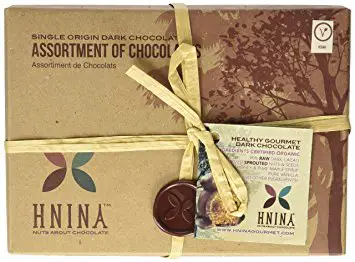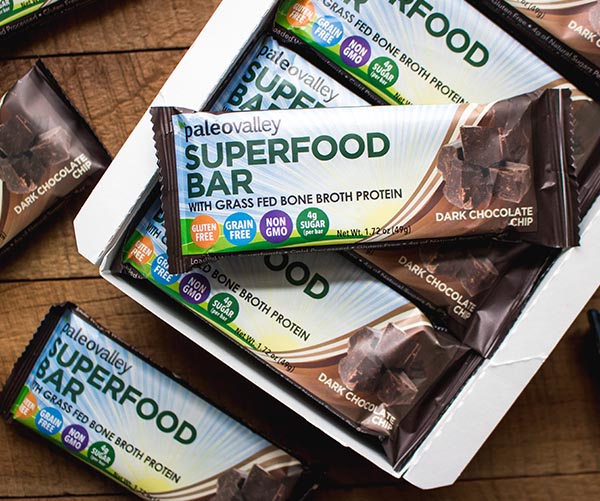
PHOTO: Leonid Mamchenkov, Fickr
Chocolate is hard to hate. While it is true that 10% of the population does not particularly like it, the rest love it so much that the average American eats 12 pounds of chocolate a year, and a European eats 15 pounds. Every single day, 1 billion people enjoy a chocolate treat – many not just for the taste but the health benefits.
When eaten in moderation and in its purest form, chocolate is full of antioxidants; it reduces blood pressure and keeps cholesterol low. It can help you lose weight by decreasing your appetite, and it increases serotonin and dopamine – chemicals in the brain that make us happy.
Unfortunately, chocolate is not so easy to find pure anymore, and recent lab results have shown surprisingly high levels of toxic heavy metals in some of the world’s most prestigious brands. If you want to avoid this nasty surprise in your next chocolate bar, make sure you know what you’re buying before your next purchase.
Sources and Negative Health Effects of Lead and Cadmium
Recently, a study by As You Sow found levels of cadmium and lead, two toxic heavy metals, in 45 of 70 chocolate bar samples (including some organic brands) at levels higher than what is considered to be safe in drinking water (scroll down to see the full list of brands tested to be high in these metals).
Both lead and cadmium are toxic metals that are unhealthy even at the lowest of doses (even though the World Health Organization (WHO) permits 0.3 mcg of lead per gram of cocoa).
Lead is found in many places in our environment: air and drinking water, soil, dust, paint, cosmetics, contaminated herbal products from China, children’s toys, jewelry, ceramics, imported canned food, and many other sources (including chocolate).
Chronic exposure to this metal leads to anemia, weakness, kidney damage, and even brain damage. Its presence in our environments may be one of the causes for the rising numbers of dementia, autoimmune diseases, kidney problems, and cardiovascular disorders.
Children are most at risk due to their still developing and growing bodies and sensitive nervous systems. Lead can alter their brains and damage many organs. It can put them at risk for lower IQ, behavior problems, hyperactivity, and slowed growth.
Cadmium is not much better but less common in the environment.
Its sources of exposure are mainly cigarette smoking, some work environments, and certain foods, according to the Central of Disease Control (CDC).
Chronic exposure to cadmium can create serious problems in kidneys, bones and lungs; leading to osteoporosis, heart disease, and potentially even cancers.
“We are getting [lead and cadmium] from multiple source. The problem with those toxic heavy metals is they accumulate in the body. It’s terrible for adults, but especially for children,” said Eleanne Van Vliet, director of toxic chemicals research.
It is easy to see how these metals should be avoided…even if that means forgetting your favorite chocolate brands.
Why Lead and Cadmium is in Chocolate
So why do many chocolate brands contain lead and cadmium? Contamination.
Manufacturers claim that both are absorbed by the cacao plant in trace amounts and come from naturally-occurring sources.
Lead exists in the Earth’s crust, but being natural does not stop it from being toxic to humans (and animals). Cadmium also exists in nature as cadmium sulfide.
Today’s world is especially contaminated by both because of fossil fuels and industrialization, as well as mining and smelting; and both are now found in soil, air, water, and our homes.
Some plants absorb them more than others. Cadmium is often taken up by grains (especially rice), potatoes, and some vegetables. Lead is most likely found in leafy vegetables such as lettuce and root crops such as carrots.
Neither metal is highly absorbed by the cocoa beans. And yet cocoa products contain one of the highest amounts of lead, and a high amount of cadmium.
This shows us that the source of contamination, despite what manufacturers say, is unlikely to be from natural contamination from the soil. And there is research to back this up.
A research article in Environmental Health Perspectives looked at the studies done by American, Nigerian, British, and Australian researchers, and concluded that only a small part of the contamination is coming from the soil. The majority of lead and cadmium contamination occurs during the shipping and processing of cocoa products.
A study by As You Sow, an environmental and social advocacy organization, found that lead and cadmium contaminates chocolate through the following routes:
- Soil contamination due to man-made pollution
- Direct application of pesticides (lead and cadmium), fertilizers (cadmium) and sewage sludge disposal (lead and cadmium)
- Processing: fermentation, drying the beans, manufacturing (drying, refining, cinching), shipping, handing, packaging
“Lead contamination in (chocolate) products occurs after the beans are harvested and dried, during the shipping of those beans and/or the manufacturing of cocoa and chocolate products,” research shows.
Contaminated Chocolate: A Long-standing Issue
Lead and cadmium contamination in chocolate is not a new issue. Lead contamination in sweets has been discussed as early as 1820, yet it still persists today.
In 2002, there was a lawsuit in California against chocolate makers for failing to implement any measures to minimize lead and cadmium contamination. The lawsuit was withdrawn, but it triggered a study later published in October’s Environmental Health Perspectives. The study aimed at discovering the main source of the problem but was unable to do so. It did confirm that most of the contamination is not there when the beans are picked.
A recent small victory on this issue came from overseas. The European Union has developed guidelines for cadmium exposure: no more than 0.10 mg/kg of cadmium for milk chocolate, and no more than 0.30 mg/kg of cadmium for darker chocolates.
In the U.S., there is still no limit set for these metals in chocolate. However, in California, chocolate makers are required to put a warning label on their products if they contain more than 4.1 mg of cadmium per daily serving.
The FDA also has placed a limit of no more than 0.1 ppm of lead in children’s candy. Nevertheless, the U.S. has a long way to go to make chocolate safer.
Until it is, it is important to know which brands are best to buy and which to avoid.
Brands of Chocolate to Avoid
As You Sow laboratory-tested 70 chocolate products, and the results were unsettling: 45 of them contained higher levels of lead and cadmium than would be safe in our drinking water.
The brands that tested unsafe included:
- Earth Circle Organics
- Endangered Species
- Equal Exchange
- Ghirardelli
- Godiva
- Hershey’s
- Kraft
- Kroger
- Lindt
- Mars
- Newman’s Own Organics
- Ritter Sport
- Trader Joe’s
- Whole Foods
(See full list and details at AsYouSow.org).
Some of these brands did not go over the limit for their products. As You Sow is contacting and trying to work with all of the chocolate manufacturers to implement strategies needed to minimize lead and cadmium in our sweets.
Since the original testing, As You Sow has increased its testing, expanding to nearly 500 brands. It has served legal notices to over 20 companies. A settlement was reached in 2018 after which companies including Cargill, Hershey, Mars and Nestle agreed to evaluate and make changes to help lower the amount of lead and cadmium.
Results of their findings haven’t been released yet, but updated information on these tests can be found here.
Finding Lead-Free and Cadmium-Free Chocolate
Finding chocolate that is truly safe when it comes to lead and cadmium is a challenge. Like previously discussed, both metals are found in the soil and may never be fully avoided. However, it is both important and possible to minimize the exposure.
 Keep in mind that dark chocolate has higher amounts of lead and cadmium because it has higher percentages of cocoa than milk chocolate. This can be an issue for true chocolate lovers, but it is not a unsolvable problem.
Keep in mind that dark chocolate has higher amounts of lead and cadmium because it has higher percentages of cocoa than milk chocolate. This can be an issue for true chocolate lovers, but it is not a unsolvable problem.
As seen from many studies, the majority of lead and cadmium make their way into chocolate products during processing. Therefore, raw chocolate has the best chance of being lead and cadmium-free.
One artisan company called HNINA makes raw, vegan chocolates with unpasteurized, sprouted nuts. The chocolate’s maker, Vanessa, created the brand when she was pregnant with her twins; and craving dark chocolate, she was unable to find a brand she could trust, not even organic.
She said that most organic brands still highly process the cocoa and add too much sugar, processed sweeteners, and palm oil. Other brands add a lot of emulsifiers and even wax to make it look shiny.
***
Cacao is also found often in health products and bars like these organic cacao superfood bars from Paleo Valley.
These dark chocolate bars are sold online and made with 100% organic cacao along with organic pumpkin seeds, organic greens blend and more.
***
Instead, Vanessa uses raw honey and pure maple syrup for both taste and preservation due to antibacterial and anti-fungal properties.
The other chocolates that tested free of metals by As You Sow are:
- Green & Black’s Organic Milk Chocolate (34% Cacao)
- Toblerone of Switzerland Milk Chocolate with Honey and Almond Nougat
- Wild Harvest Organic Rich Chocolate Hot Cocoa Mix
This article was first published in 2017 and updated in 2022. See the full updated 2022 results at the As You Sow website here.
Recommended reading:
Dark Chocolate and Stem Cells: The Hidden Truth Big Pharma Never Told You About
First Chocolate Company to Brag About Being Pro-GMO Also Supports GMO Cacao Trees
Mars Will Remove Artificial Dyes from Their Products
Thanks for installing the Bottom of every post plugin by Corey Salzano. Contact me if you need custom WordPress plugins or website design.





